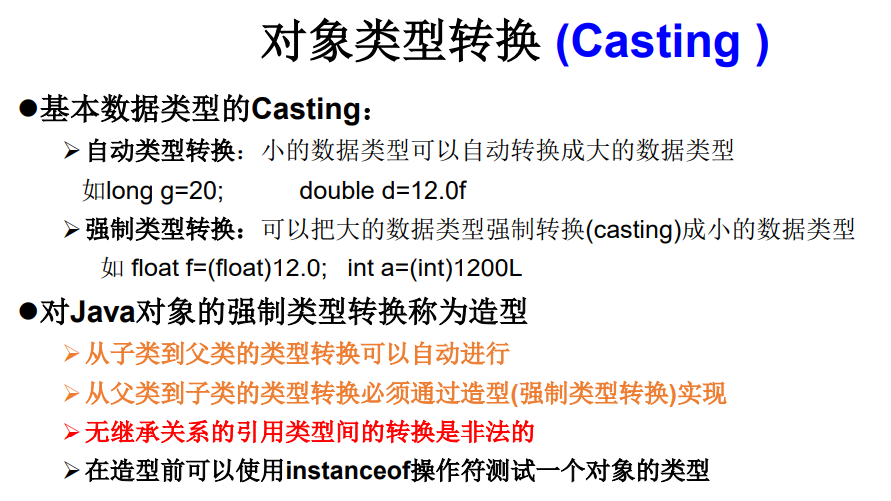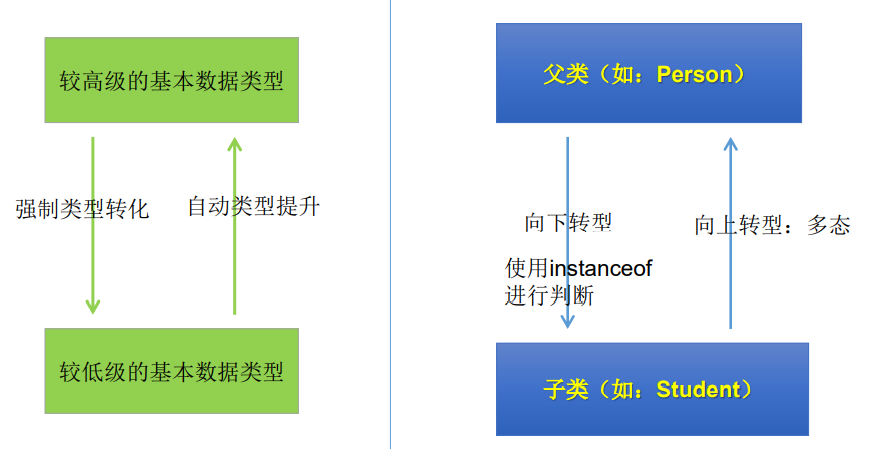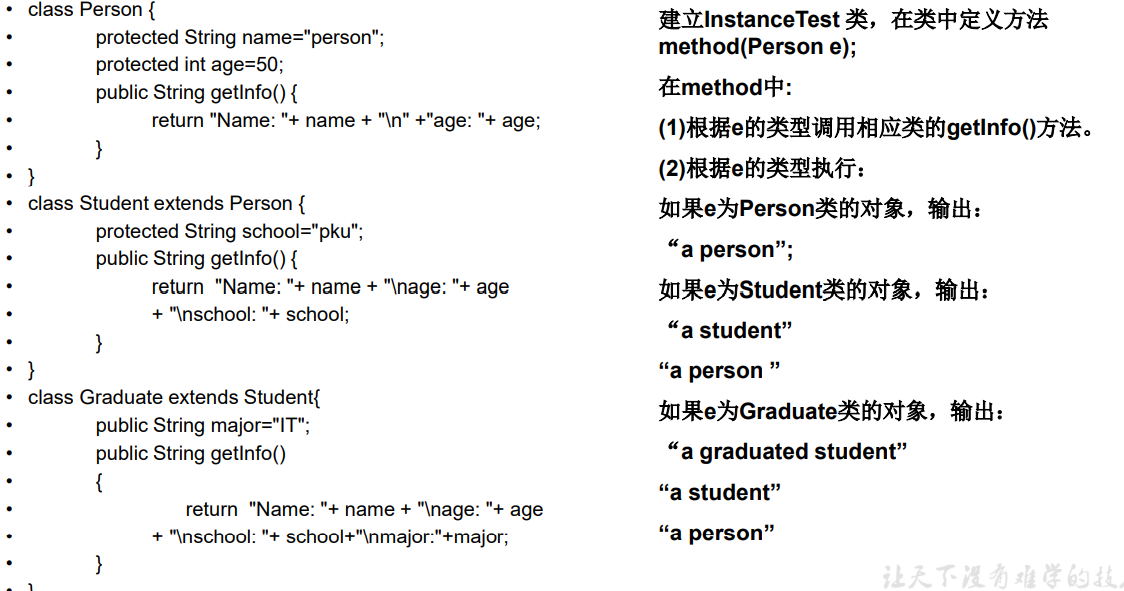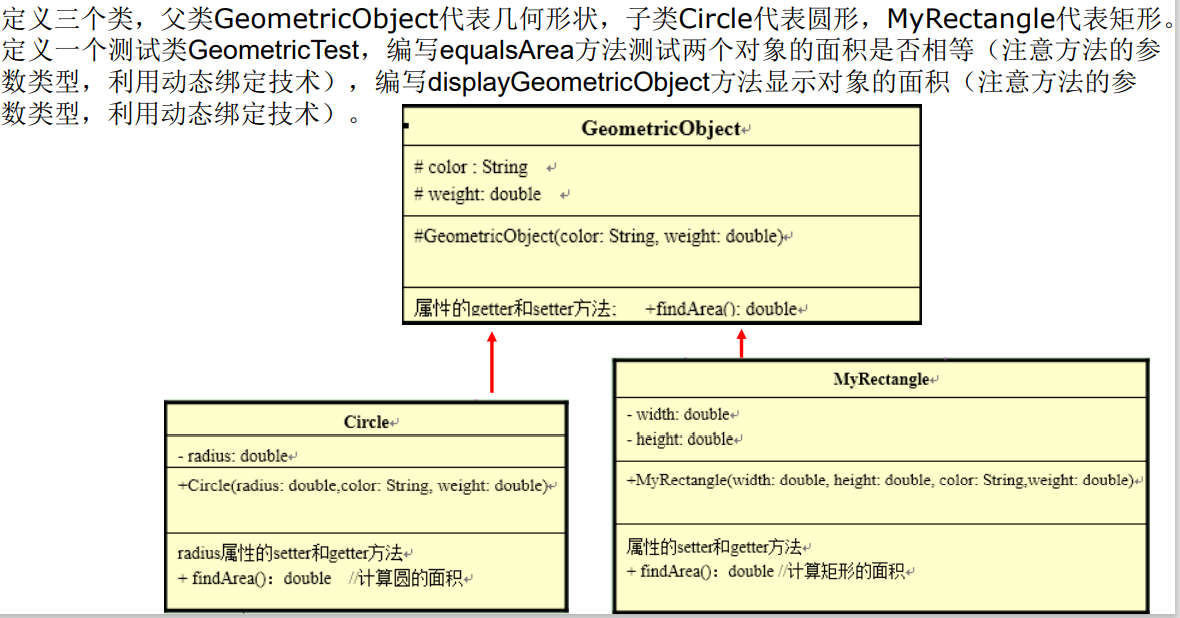多态的补充:
- 有了对象的多态性以后,内存中实际上是加载了子类特有的属性和方法的,但是由于变量声明为父类类型,导致编译时,只能调用父类中声明的属性和方法。子类特有的属性和方法不能调用。
- 如何才能调用子类特有的属性和方法? //向下转型:使用强制类型转换符。
- 多态是运行时行为。
类型转换:


强制转换出现的问题:
1 | //使用强转时,可能出现ClassCastException的异常。 |
解决方案——instanceof关键字的使用
1 | /* |
Demo:
1 | if(p2 instanceof Woman){ |
练习1:

1 | class Base { |
总结:
练习1:
- 1.若子类重写了父类方法,就意味着子类里定义的方法彻底覆盖了父类里的同名方法,系统将不可能把父类里的方法转移到子类中:编译看左边,运行看右边
- 2.对于实例变量则不存在这样的现象,即使子类里定义了与父类完全相同的实例变量,这个实例变量依然不可能覆盖父类中定义的实例变量:编译运行都看左边
练习2:

1 | public class InstanceTest { |
练习3:

- 对于多态,只有等到方法调用的那一刻,解释运行器才会确定所要调用的具体 方法,这称为“晚绑定”或“动态绑定”。
练习4:
1 | //考查多态的笔试题目: |
- 形参中int[] arr=int… arr 所以构成重写。
- 编译时编译的是Base1的add方法然后执行时Sub1重写了add方法所以输出sub_1与sub_2无关(不构成重写)
- 方法的重载中确定个数的形参优先调用,所以输出sub_2。

